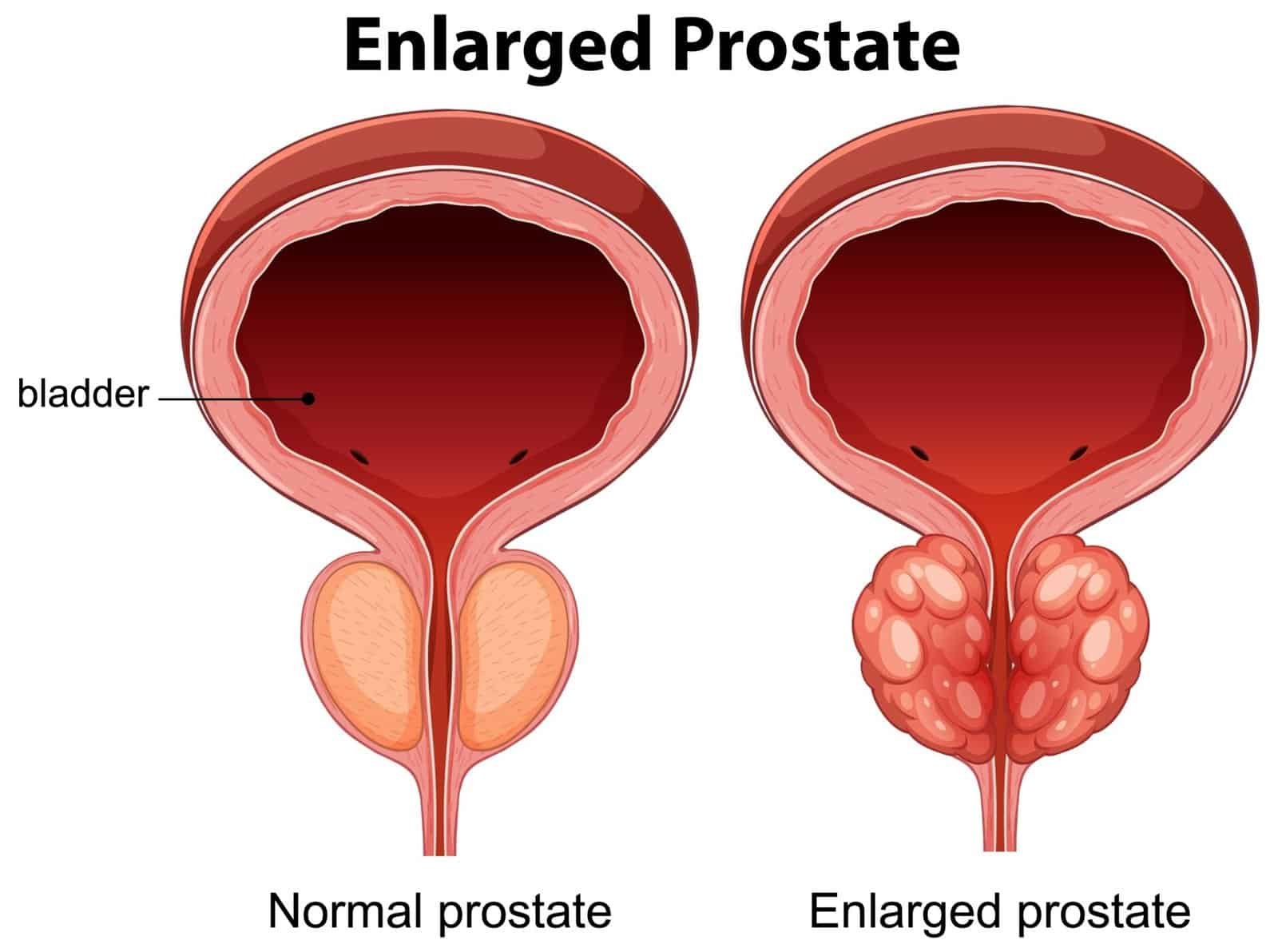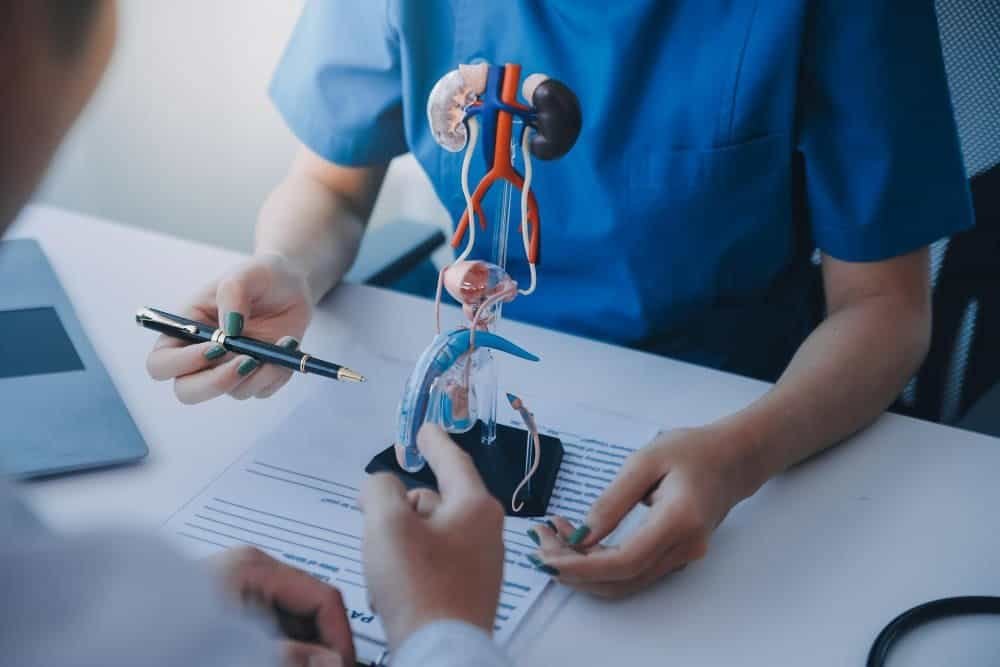Curious about your prostate size? 🤔 Understanding what’s normal prostate size is the first step to taking charge of your health. Let’s explore what the measurements mean for you.

Understanding Your Prostate Gland
The prostate is a small but mighty gland that plays a vital role in the male reproductive system. Located just below the bladder and in front of the rectum, it is the largest accessory gland in the system. Its main function is to produce the milky fluid that, when mixed with sperm from the testicles, creates semen. This fluid contains enzymes and hormones that help the sperm thrive, making the prostate essential for fertility. Think of it as a crucial support system for the reproductive process.
A healthy adult prostate is typically soft and smooth. Its strategic position means that its size directly impacts urinary functions. The urethra, the tube that carries urine from the bladder out of the body, passes directly through the center of the prostate’s zone. This is why changes in prostate size often lead to noticeable urinary symptoms, a key sign that something might be amiss. Understanding this anatomy is the first step in appreciating why maintaining good prostate health is so important for a man’s overall quality of life.
What Is a Normal Prostate Size?
When we discuss normal prostate size, we’re typically referring to the average size found in a young, healthy adult man. In this stage of life, the prostate gland is roughly the size of a walnut.
To be more precise, doctors use specific measurements to assess prostate volume. A healthy adult prostate usually weighs between 20 and 25 grams and has a volume of about 25 cubic centimeters (cc) or milliliters (ml). Its physical dimensions are approximately 4 centimeters wide, 3 centimeters in height, and 2 centimeters thick.
These numbers provide a baseline for what is considered a normal state. However, it is crucial to remember that “normal” can vary from one person to another. Various factors, including genetics and overall health, can influence the baseline size of the gland. The average normal prostate size serves as a helpful reference point, but it’s not a one-size-fits-all definition.
How Prostate Size Changes with Age
One of the most important things to learn about the prostate gland is that it doesn’t stay the same size throughout your life. The gland undergoes two main growth spurts. The first occurs during puberty when it doubles in size. The second phase of growth begins around age 25 and continues for the rest of a man’s life. This ongoing process is a natural part of aging.
Let’s look at the typical prostate size changes over time:
- Ages 20-40: The prostate remains relatively stable, close to the walnut size mentioned earlier, weighing around 20-25 grams. This is the benchmark for the average normal prostate size.
- Ages 40-60: The gland begins to grow more noticeably. By age 60, it’s not uncommon for the prostate to have grown to the size of an apricot or even a golf ball, with its weight increasing to 30-40 grams. This is often when men first begin to experience urinary issues.
- Ages 60+: The growth can continue. In some adults, the prostate can become much larger, sometimes exceeding 100 grams.
This gradual increase in size is not necessarily a sign of disease. However, as the prostate gets larger, it can begin to squeeze the urethra, leading to the health conditions we’ll discuss next.
Prostate Enlargement: Understanding BPH

As the prostate continues to grow with age, it can lead to a very common condition known as benign prostatic hyperplasia, or BPH. The word “benign” is key here—it means the enlargement is not cancerous. BPH is simply the medical term for an enlarged prostat gland. It affects millions of men worldwide and is a natural consequence of the aging process.
So, what constitutes an enlargement? Generally, a prostate volume that exceeds 30 milliliters is considered enlarged. There is an upper limit of normal volume, beyond which symptoms are more likely to appear. The most common signs and symptoms of prostatic hyperplasia are urinary in nature because the enlarged gland presses on the urethra. These can include:
- A frequent or urgent need to urinate, especially at night.
- Difficulty starting urination.
- A weak or interrupted urine stream.
- Dribbling at the end of urination.
- The feeling that your bladder is never fully empty.
While BPH is not prostate cancer, the two conditions can exist at the same time and sometimes present with similar symptoms. This is why professional medical evaluation is crucial to identify the root cause of your urinary issues.
How Doctors Diagnose and Measure Prostate Size
Diagnosing an enlarged prostate is a multi-step process that allows your doctor or urologist to get a complete picture of your prostate health. The goal is to not only determine the prostate size but also to rule out other more serious conditions like prostate cancer.
The diagnostic journey often starts with a discussion of your symptoms and medical history. This is followed by a physical exam, which may include a Digital Rectal Exam (DRE). During a DRE, the doctor can feel the prostate to check for its size, shape, and texture. While this provides a rough estimate, more precise measurements require imaging tests.
A transrectal ultrasound is a common and effective tool. It uses sound waves to create an image of the prostate gland, allowing the doctor to accurately measure its volume in cubic centimeters or milliliters. An MRI can also be used for highly detailed images. Sometimes, a prostate size calculator may be used, which takes the height, width, and length from the imaging results to calculate the volume. These precise measures are essential for determining the severity of the prostate enlargement and planning the best course of treatment.
Why an Enlarged Prostate Can Be Dangerous 😟
While benign prostatic hyperplasia (BPH) is not cancerous, it shouldn’t be ignored. If left untreated, a severely enlarged prostate can lead to more serious health problems. Is it dangerous? It can be, as the complications can significantly impact your quality of life and overall well-being.
When the prostate becomes so large that it severely obstructs the flow of urine, several complications can arise. These include:
- Acute Urinary Retention: A sudden and painful inability to urinate. This is a medical emergency that requires immediate attention.
- Bladder Damage: Over time, the bladder has to work harder to push urine through the narrowed urethra. This can weaken the bladder muscle, making it unable to empty completely.
- Urinary Tract Infections (UTIs): Stagnant urine in the bladder creates a breeding ground for bacteria, leading to recurrent infections.
- Bladder Stones: Minerals from concentrated urine can crystallize and form stones in the bladder.
- Kidney Damage: In rare, severe cases, the pressure from a full bladder can back up to the kidneys, causing damage.
Understanding these risks is crucial. Seeking timely treatment for BPH isn’t just about relieving annoying symptoms—it’s about maintaining the health of your entire urinary system.
Take Charge of Your Health: Modern Treatment for Enlargement 💪
For many years, the primary treatment options for a significantly enlarged prostate were medication or invasive surgery. While these methods can be effective, they also come with potential side effects. Today, however, you have more choices. Advanced, minimally invasive techniques in interventional radiology offer highly effective alternatives that can help you take charge of your men’s health without the need for major surgery.
At the forefront of these innovations are treatments like Prostatic Artery Embolization (PAE) and Echolaser, both specialties of Dr. Samir Abdel Ghaffar. These procedures focus on reducing the prostate size to alleviate symptoms.
- Prostatic Artery Embolization (PAE): This is a groundbreaking, non-surgical procedure. An interventional radiologist makes a tiny incision in the wrist or groin to access the arteries supplying blood to the prostate. Tiny, harmless particles are then injected to block these arteries. This reduces blood flow, causing the prostate gland to shrink over time. Patients experience significant symptom relief with a much shorter recovery time and lower risk of sexual side effects compared to traditional surgery. It’s a fantastic option for maintaining your quality of life.
- Echolaser: This technique uses laser energy, guided by ultrasound, to precisely target and reduce excess prostate tissue. A thin laser fiber is inserted into the prostate, and the energy delivered shrinks the gland from the inside out, relieving pressure on the urethra. It is a minimally invasive treatment that provides lasting relief.
These modern approaches are changing how we think about prostate enlargement. It’s important to discover all your options and discuss with a specialist which path is right for you.
Actionable Tips for Maintaining Prostate Health
While you can’t stop the prostate from its natural growth with age, you can adopt a lifestyle that supports overall prostate health. Here are some practical tips to help you feel your best:
- Eat a Balanced Diet: Focus on a diet rich in fruits, vegetables, and healthy fats. Foods high in lycopene (like tomatoes) and omega-3 fatty acids (like salmon) are thought to be particularly beneficial for men’s health. 🥦
- Stay Active: Regular exercise helps with weight management, which is a key factor in maintaining health. Aim for at least 30 minutes of moderate activity most days of the week.
- Manage Your Weight: Obesity is linked to a higher risk of developing an enlarged prostate and other health issues. Keeping your weight in a healthy range is one of the best things you can do.
- Listen to Your Body: Pay attention to any new or worsening urinary symptoms. Don’t dismiss them as just a part of aging. Early detection of any prostate matters is key.
- Schedule Regular Check-ups: Talk to your doctor regularly about your prostate health. This is the best way to monitor any prostate size changes and address conditions like BPH before they become more serious.
Your Path to Better Prostate Health Starts Here
In this article, we’ve explored the definition of normal prostate size, how it changes, and what happens when it becomes enlarged. Understanding your prostate gland is not just about knowing numbers and measurements in grams or centimeters; it’s about recognizing its role in your body and knowing when to seek help. An enlarged prostate, or BPH, is a common part of life for many men, but the symptoms don’t have to control you.
From a walnut-sized gland in a young adult to a much larger organ in later years, the journey of the prostate is one of continuous growth. When that growth begins to affect your daily life, it’s time to act. Fortunately, with advanced, minimally invasive treatments like Prostatic Artery Embolization and Echolaser, you can find relief and restore your quality of life without resorting to major surgery.
If you are experiencing the signs of prostate enlargement, the most important step is to consult with a specialist. Dr. Samir Abdel Ghaffar is a leader in interventional radiology who can help you discover the best treatment path for your unique situation. Don’t let uncertainty about your prostate health hold you back. Take the first step today. 😉
 العربية
العربية 
